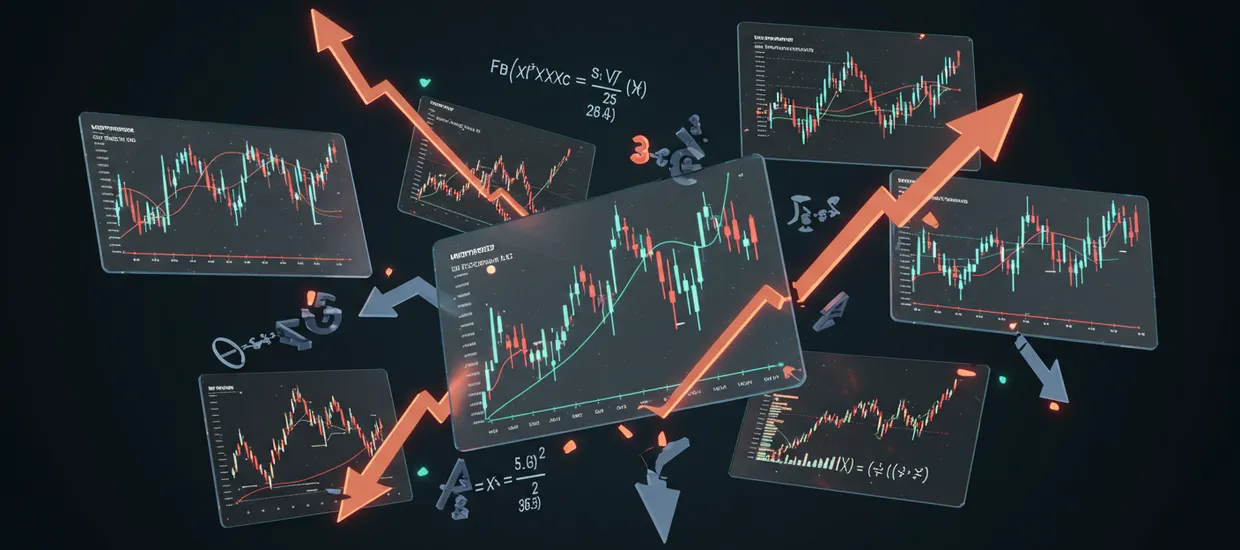- Use moving averages (50-day, 200-day) to identify trend direction
- Enter positions when price breaks above resistance levels
- Exit when trend shows signs of reversal
- Apply trailing stops to protect profits
ETF Trading Strategies: Essential Approaches for Modern Investors

Exchange-traded funds (ETFs) offer investors an efficient way to gain exposure to various market segments with lower costs and greater flexibility. Implementing targeted ETF trading strategies can help maximize returns while managing risk in changing market conditions.
ETFs combine the diversification benefits of mutual funds with the trading flexibility of stocks. Before implementing any etf trading strategy, you need to understand the basic mechanics of how these instruments work.
| ETF Characteristic | Trading Implications |
|---|---|
| Intraday Trading | Can buy/sell throughout market hours |
| Expense Ratios | Lower cost than mutual funds typically |
| Transparency | Daily disclosure of holdings |
| Liquidity | Varies by ETF; affects trading costs |
Each ETF has unique liquidity characteristics that impact your ability to enter and exit positions efficiently. Platforms like Pocket Option provide tools to analyze these metrics before execution.
Several etf trading strategies have proven effective for different market conditions and investor objectives. The right approach depends on your time horizon, risk tolerance, and market outlook.
A trend following etf trading system relies on identifying and capitalizing on persistent market movements.
| Indicator | Signal Type | Action |
|---|---|---|
| 50-day MA crosses above 200-day MA | Bullish | Consider long position |
| 50-day MA crosses below 200-day MA | Bearish | Consider exit or short |
| Price breaks above resistance | Bullish | Entry confirmation |
This approach involves moving capital between different market sectors based on economic cycles and relative performance.
- Overweight defensive sectors during economic downturns
- Shift to cyclical sectors during economic expansion
- Monitor relative strength indicators between sectors
| Economic Phase | Favored Sectors | ETF Examples |
|---|---|---|
| Early Recovery | Financials, Consumer Discretionary | XLF, XLY |
| Expansion | Technology, Industrials | XLK, XLI |
| Late Cycle | Energy, Materials | XLE, XLB |
| Contraction | Healthcare, Utilities, Consumer Staples | XLV, XLU, XLP |
For more active traders, etf day trading strategies offer ways to capitalize on short-term price movements.
This approach assumes that prices will revert to their historical average after significant deviations.
- Identify overbought/oversold conditions using RSI or Bollinger Bands
- Enter countertrend positions when technical indicators signal extremes
- Set tight stop losses to manage risk
| Technical Signal | Interpretation | Potential Action |
|---|---|---|
| RSI below 30 | Oversold condition | Consider long position |
| RSI above 70 | Overbought condition | Consider short position |
| Price at lower Bollinger Band | Potential support level | Watch for reversal patterns |
Breakout trading focuses on entering positions when price moves beyond established support or resistance levels.
- Identify key price levels using volume profile or prior swing points
- Enter when price breaks through with increased volume
- Place stops just below the breakout level
| Pattern | Confirmation Signals | Risk Management |
|---|---|---|
| Cup and Handle | Volume spike on breakout, momentum indicators rising | Stop below handle low |
| Rectangle | Clear resistance level, increased volume | Stop below prior support |
| Ascending Triangle | Break above horizontal resistance | Stop below upward sloping support line |
Even the best etf trading strategies require proper risk management to succeed long-term.
- Limit position size to 1-5% of your portfolio per trade
- Use stop-loss orders to define maximum acceptable loss
- Consider correlation between positions to avoid concentration risk
- Review trades regularly to identify patterns and improve strategy
Platforms like Pocket Option offer risk management tools specifically designed for ETF traders, allowing precise position sizing and automated stop placements.
Successful ETF trading strategies balance technical analysis, fundamental research, and disciplined risk management. Whether you prefer trend following, sector rotation, or more active trading approaches, consistent application of your chosen method matters more than constant strategy switching. Start with a clearly defined plan, test it thoroughly before committing significant capital, and maintain trading records to refine your approach over time.
FAQ
What's the difference between active and passive ETF trading strategies?
Passive strategies involve holding ETFs long-term to track market indexes with minimal trading, while active strategies like sector rotation or trend following involve regular position adjustments based on market conditions and technical signals to seek outperformance.
How much capital do I need to start trading ETFs?
You can start trading ETFs with as little as the price of one share, which can range from $20-300 depending on the fund. Some brokers even offer fractional shares, allowing you to begin with even smaller amounts.
Are ETF trading strategies suitable for beginners?
Yes, some ETF strategies like basic index investing are very beginner-friendly. More complex approaches like day trading ETFs require additional knowledge and experience. Beginners should start with simpler strategies and smaller position sizes.
How do ETF trading strategies differ from stock trading?
ETF trading strategies often focus more on sector or market movements rather than company-specific factors. They typically involve lower volatility, built-in diversification, and can be more tax-efficient than individual stock trading.
What tools are needed to implement ETF trading strategies?
Basic requirements include a brokerage account with ETF access, charting software with technical indicators, research capabilities for fundamental analysis, and risk management tools. Platforms like Pocket Option provide these features in an integrated environment.